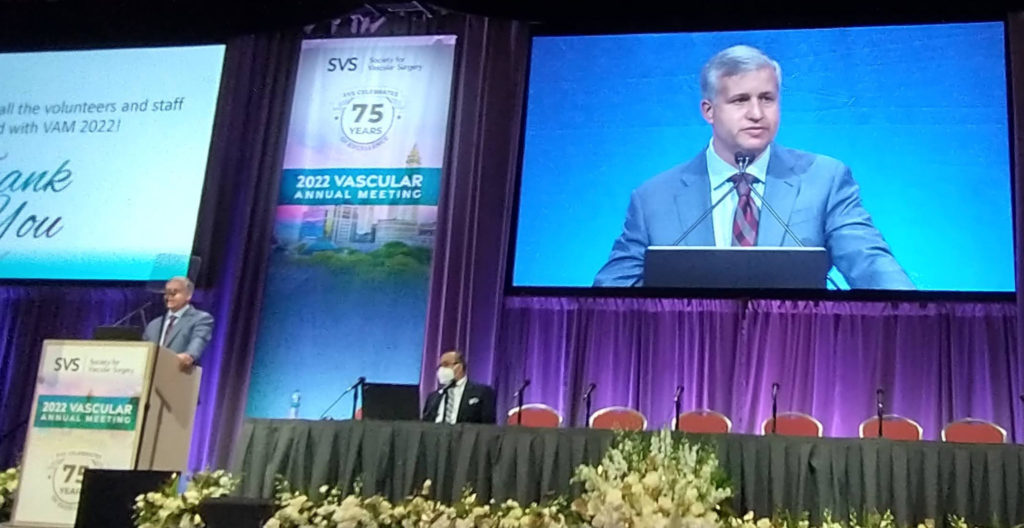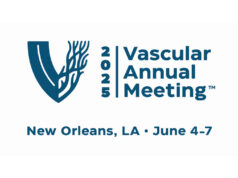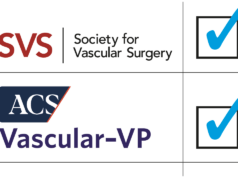
From the first Vascular Annual Meeting (VAM) that featured just eight papers, to VAM 2022 with many more times that number of presentations, each gathering through this year’s 75th edition has featured research, friendships and the desire to improve patient care.
“For 75 years, vascular surgeons have been demonstrating their ingenuity, tenacity, and collaboration at this meeting, and, unless this is your very first VAM, you understand firsthand the power that comes from this meeting,” said Society for Vascular Surgery (SVS) President Ali AbuRahma, MD, at the Wednesday morning VAM 2022 (June 15–18) Opening Ceremony.
“If this is your first year attending VAM, we are so glad you are here. You are in for a wonderful time, full of innovation, friendship, scholarship, and plenty of fun. Never before have we had a meeting with such a wide range of opportunities,” AbuRahma continued, adding he hopes all attendees are engaged and inspired.
“VAM 2022 takes it to the next level for all skill levels, all practice environments,” and a wide range of business and clinical topics sure to engage.
SVS Program Chair Andres Schanzer, MD, welcomed everyone to the meeting, saying it was taking place in “what I consider my hometown.”
“This is the premiere vascular meeting for the presentation of new research,” he said and thanked the more than 100 SVS members who spent hundreds of hours planning VAM 2022.
One of the upsides of COVID, he said, is that “it forced us to innovate. The streaming we embraced out of necessity now allows us to reach those who can’t be here with us.” Thus, the livestreaming introduced last year has been expanded to an afternoon track as well, with a total of 24 sessions livestreamed.
Other considerations or improvements for 2022 include access to all VAM recordings to be available as early as the week of June 20. All those with in-person and livestreaming registrations will have access to all VAM recordings for up to three years.
The event also featured expanded and improved sessions from the Postgraduate Education Committee—including breakfast, concurrent, “Ask the Expert” and special section sessions and the postgraduate courses themselves. Educational sessions have been planned for each of the five special SVS membership sections, including the Physician Assistants, Community Practice, the Sub-Section on Outpatient & Office Vascular Care (SOOVC), and the new Young Surgeons and Women’s sections. “This helps us bring in new and diverse voices in 2022 and in the future,” Schanzer said.
There were also visual abstracts, created with the support and enthusiasm of the Young Surgeons Section and published in advance of the meeting and now available on the VAM website, vascular.org/VAM, under the program button. Additionally, Schanzer pointed to expanded networking opportunities. “Take advantage of these,” he urged attendees. “Our Society is what it is because of you.”
Feedback is critical to planning for following years, said Schanzer, as he urged attendees to provide information that will lead not only to improvements and innovations but also for content members will find useful. “Push us to try new things,” he said. “Tell us what you want.”
AbuRahma said, “I have immense pride for our organization, for our specialty, and for you – our members and attendees who are resilient and dedicated to always striving towards the moving goal post of improvement. Thank you.”












